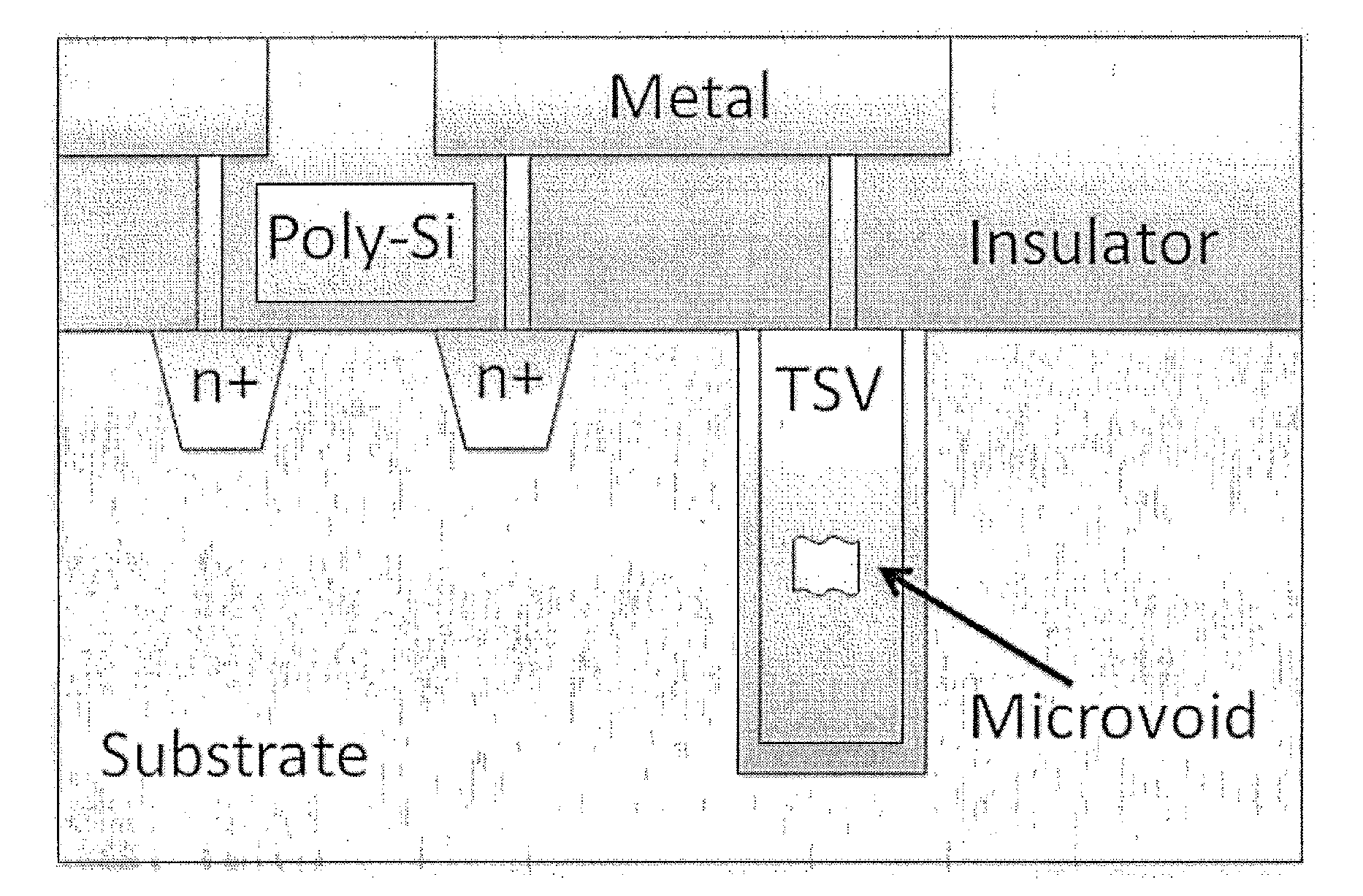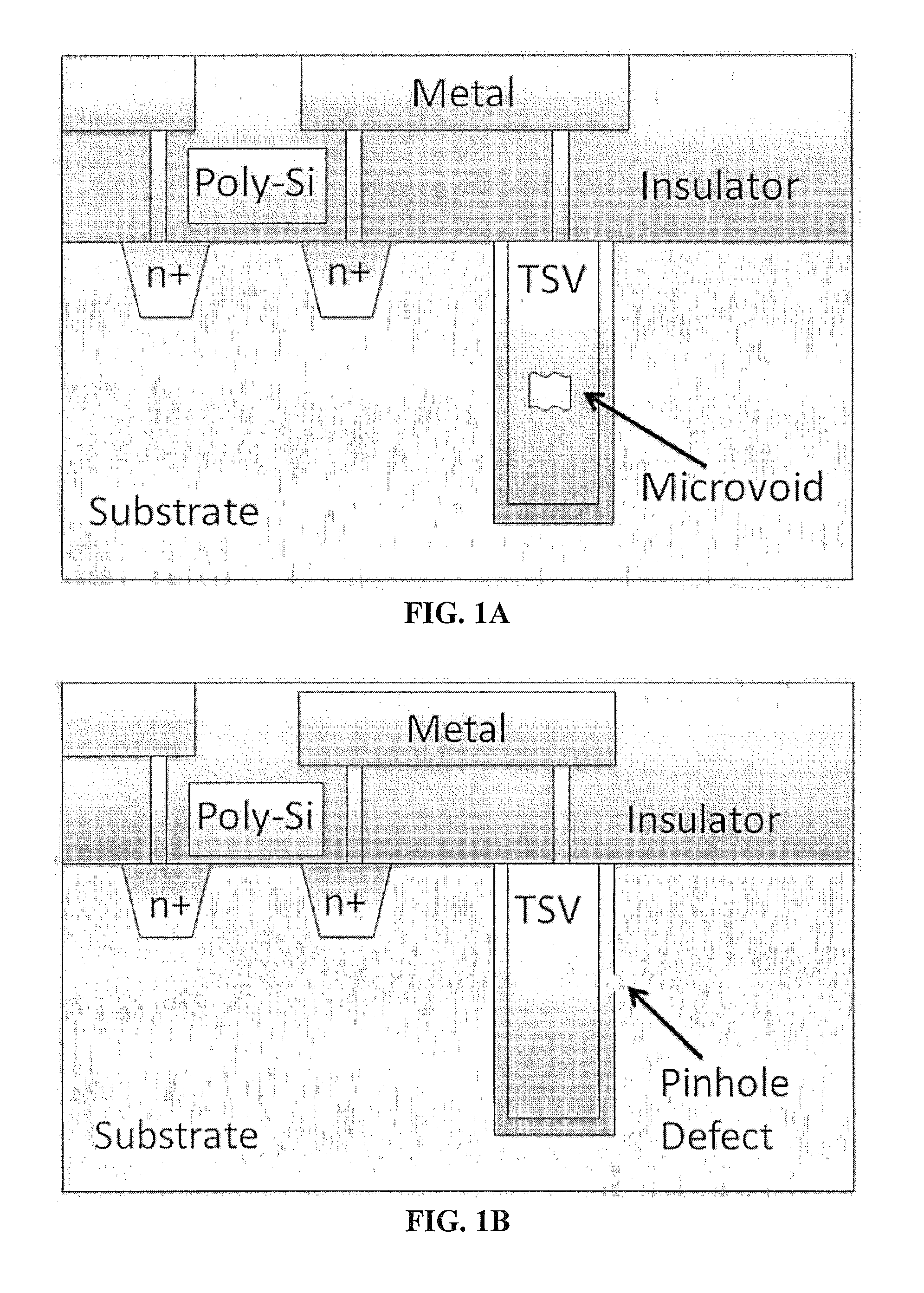METHOD AND ARCHITECTURE FOR PRE-BOND PROBING OF TSVs IN 3D STACKED INTEGRATED CIRCUITS
a technology of integrated circuits and pre-bonding, which is applied in the direction of resistance/reactance/impedence, semiconductor/solid-state device testing/measurement, instruments, etc., can solve the problems of affecting chip functionality, increasing resistance and path delay, and affecting product quality, etc., to facilitate defect localization and repair
- Summary
- Abstract
- Description
- Claims
- Application Information
AI Technical Summary
Benefits of technology
Problems solved by technology
Method used
Image
Examples
example
[0085]For the simulations, base line resistance and capacitance values were determined based on expected values according to the materials of the TSVs. While a TSV may be manufactured from a number of different materials, copper is often used for metal layers and polysilicon may be a non-metal alternative. The resistance of a TSV made from copper with a 2-5 μm diameter and 5 μm height is 80-200 mΩ. For a polysilicon TSV with a 28-46 μm diameter and 50 μm height, the resistance is 1.3-5.0Ω. The capacitance of a copper TSV with a 1-10 μm diameter and 30-100 μm height is 10-200 fF.
[0086]HSPICE was used to model and obtain experimental results of a TSV network of 20 TSVs. The number 20 was determined based on the relative diameter and pitch of probe leads and TSVs. Unless otherwise stated, the resistance of each TSV and contact resistance is 1Ω and the TSV's associated capacitance is 20 fF. The probe needle resistance is 10 Ω. This value is several Ohms higher than contact res...
PUM
 Login to View More
Login to View More Abstract
Description
Claims
Application Information
 Login to View More
Login to View More - R&D
- Intellectual Property
- Life Sciences
- Materials
- Tech Scout
- Unparalleled Data Quality
- Higher Quality Content
- 60% Fewer Hallucinations
Browse by: Latest US Patents, China's latest patents, Technical Efficacy Thesaurus, Application Domain, Technology Topic, Popular Technical Reports.
© 2025 PatSnap. All rights reserved.Legal|Privacy policy|Modern Slavery Act Transparency Statement|Sitemap|About US| Contact US: help@patsnap.com



